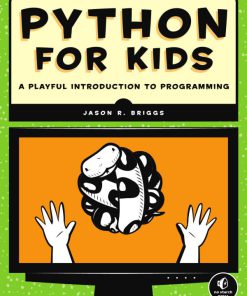Brutal Refactoring More Working Effectively With Legacy Code 1st Edition by Michael Feathers ISBN 032179320X 9780321793201
Original price was: $50.00.$25.00Current price is: $25.00.
Authors:Michael Feathers , Series:IT & Computer [145] , Tags:Computers; Software Development & Engineering; Systems Analysis & Design , Author sort:Feathers, Michael , Ids:Google; 9780321793201 , Languages:Languages:eng , Published:Published:Oct 2021 , Publisher:Addison Wesley Professional , Comments:Comments:Most software professionals spend much of their time working with someone else’s brutally imperfect code. When you consider the serious constraints that legacy code was created under, it’s no surprise it looks so bad. The question is: now what? In Brutal Refactoring, Michael Feathers starts with code bases “as they are,” not as “we pretend them to be” – and shows how to aggressively reshape them to make them maintainable and amenable to further development. Brutal Refactoring takes the next steps beyond all previous refactoring books, including Feathers’ own highly-praised Working Effectively with Legacy Code. Feathers shares new insights reflecting all he’s learned in the eleven years since that book, and offers the first detailed practical advice on the unique nuances of system-wide refactoring. Brutal Refactoring demonstrates Feathers’ aggressive refactoring techniques through a series of exceptionally realistic case examples, introducing tactical “recipes” and high-level strategies for overcoming a wide range of legacy code challenges. Coverage includes: Making intractable code understandable Componentizing software factory and repository hubs Sensing variables Using in vitro test harnesses and production toggles Mining runtimes Decomposing heavily conditional code Profiling good and bad code bases Detecting and managing code hotspots Uncovering patterns in code duplication Performing domain discovery Managing boundaries between object-oriented and procedural code Using the Twist method to extract classes, and much more













